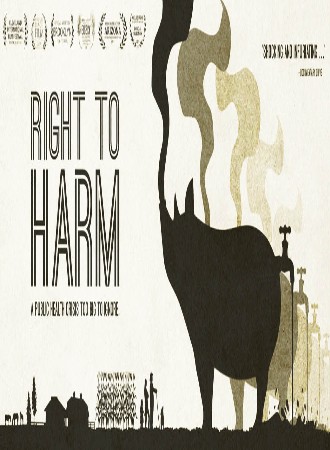
Right to Harm 2019
Distributed by Collective Eye Films, 1315 SE 20th Ave. #3, Portland OR 97214; 971-236-2056
Produced by Mark Bittman
Directed by Matt Wechsler and Annie Speicher
Streaming, 75 mins
High School - General Adult
Civil Rights; Environmental Ethics; Public Health
Date Entered: 04/03/2020
Reviewed by Kimberly A. Plassche, Map Librarian, Liaison to Geography, University at BuffaloWhat happens when a concentrated feeding animal operation (CAFO), also known as a factory farm, moves in next door? Right to Harm follows the struggles of communities across the United States as they deal with bad odor, serious illness, decreased property value and an overall reduced quality of life as the result of factory farms springing up in the neighborhood.
Directors Matt Wechsler and Annie Speicher convey how factory farming operations negatively affect the surrounding environment and residents. Whether it be by spraying liquid manure on crops just feet away from a neighbor’s porch or polluting the drinking water (causing “brown water” event), families are revealed to suffer from asthma, infections and cancer due to their new neighbors. Right to Harm features interviews with public health scientists and community activists working with local legislative bodies to enact stricter regulations on the companies providing an estimated 90-95% of the food Americans eat. The unwavering community activists continue their fights in Iowa, Arizona, Michigan and North Carolina despite setbacks, as they are encouraged by a victory in Wisconsin.
Right to Harm, an official selection at several film festivals (Big Sky Documentary, Cleveland International, Brooklyn, Mill Valley, Hot Spring Documentary and Melbourne) is strongly recommended for high school, academic and public libraries. It shows a dark side of the food we eat and is likely to inspire further community action. Younger viewers may be introduced to the concepts of environment justice and community action. Viewers can get involved by visiting the accompanying website and find help for their own communities.